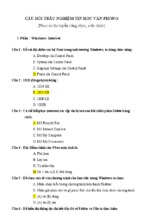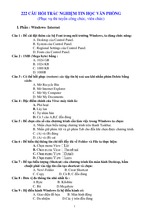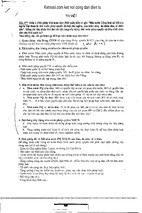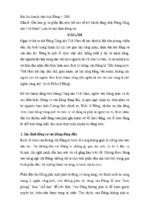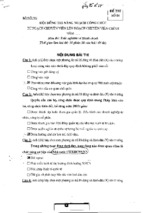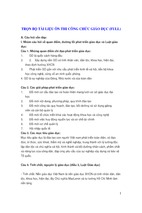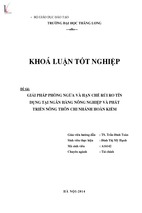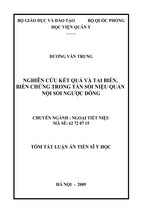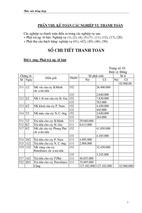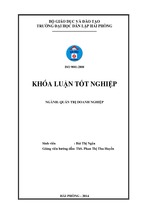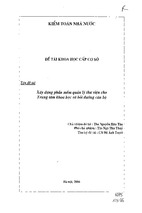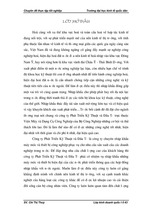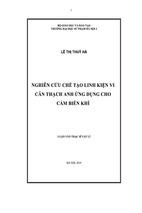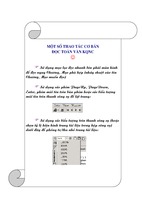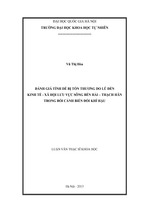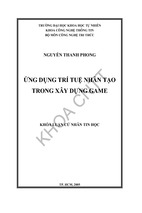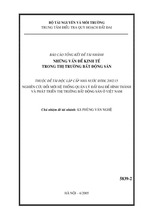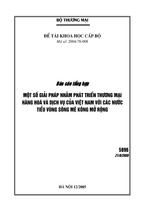ACS712
Fully Integrated, Hall Effect-Based Linear Current Sensor IC
with 2.1 kVRMS Isolation and a Low-Resistance Current Conductor
Features and Benefits
Description
▪
▪
▪
▪
▪
▪
▪
▪
▪
▪
▪
▪
▪
▪
▪
The Allegro™ ACS712 provides economical and precise
solutions for AC or DC current sensing in industrial, commercial,
and communications systems. The device package allows for
easy implementation by the customer. Typical applications
include motor control, load detection and management, switchmode power supplies, and overcurrent fault protection. The
device is not intended for automotive applications.
Low-noise analog signal path
Device bandwidth is set via the new FILTER pin
5 μs output rise time in response to step input current
80 kHz bandwidth
Total output error 1.5% at TA = 25°C
Small footprint, low-profile SOIC8 package
1.2 mΩ internal conductor resistance
2.1 kVRMS minimum isolation voltage from pins 1-4 to pins 5-8
5.0 V, single supply operation
66 to 185 mV/A output sensitivity
Output voltage proportional to AC or DC currents
Factory-trimmed for accuracy
Extremely stable output offset voltage
Nearly zero magnetic hysteresis
Ratiometric output from supply voltage
The device consists of a precise, low-offset, linear Hall circuit
with a copper conduction path located near the surface of the
die. Applied current flowing through this copper conduction
path generates a magnetic field which the Hall IC converts into a
proportional voltage. Device accuracy is optimized through the
close proximity of the magnetic signal to the Hall transducer.
A precise, proportional voltage is provided by the low-offset,
chopper-stabilized BiCMOS Hall IC, which is programmed
for accuracy after packaging.
TÜV America
Certificate Number:
U8V 06 05 54214 010
The output of the device has a positive slope (>VIOUT(Q))
when an increasing current flows through the primary copper
conduction path (from pins 1 and 2, to pins 3 and 4), which is
the path used for current sampling. The internal resistance of
this conductive path is 1.2 mΩ typical, providing low power
loss. The thickness of the copper conductor allows survival of
Package: 8 Lead SOIC (suffix LC)
Continued on the next page…
Approximate Scale 1:1
Typical Application
+5 V
1
2
IP
IP+
VCC
IP+ VIOUT
8
7
VOUT
CBYP
0.1 μF
ACS712
3
4
IP– FILTER
IP–
GND
6
5
CF
1 nF
Application 1. The ACS712 outputs an analog signal, VOUT .
that varies linearly with the uni- or bi-directional AC or DC
primary sampled current, IP , within the range specified. CF
is recommended for noise management, with values that
depend on the application.
ACS712-DS, Rev. 15
Fully Integrated, Hall Effect-Based Linear Current Sensor IC
with 2.1 kVRMS Isolation and a Low-Resistance Current Conductor
ACS712
Description (continued)
the device at up to 5× overcurrent conditions. The terminals of the
conductive path are electrically isolated from the signal leads (pins
5 through 8). This allows the ACS712 to be used in applications
requiring electrical isolation without the use of opto-isolators or
other costly isolation techniques.
The ACS712 is provided in a small, surface mount SOIC8 package.
The leadframe is plated with 100% matte tin, which is compatible
with standard lead (Pb) free printed circuit board assembly processes.
Internally, the device is Pb-free, except for flip-chip high-temperature
Pb-based solder balls, currently exempt from RoHS. The device is
fully calibrated prior to shipment from the factory.
Selection Guide
Part Number
TA
(°C)
Packing*
Optimized Range, IP
(A)
Sensitivity, Sens
(Typ) (mV/A)
ACS712ELCTR-05B-T
Tape and reel, 3000 pieces/reel
–40 to 85
±5
185
ACS712ELCTR-20A-T
Tape and reel, 3000 pieces/reel
–40 to 85
±20
100
ACS712ELCTR-30A-T
Tape and reel, 3000 pieces/reel
–40 to 85
±30
66
*Contact Allegro for additional packing options.
Absolute Maximum Ratings
Characteristic
Symbol
Notes
Rating
Units
Supply Voltage
VCC
8
V
Reverse Supply Voltage
VRCC
–0.1
V
Output Voltage
VIOUT
8
V
Reverse Output Voltage
VRIOUT
–0.1
V
Output Current Source
IIOUT(Source)
3
mA
IIOUT(Sink)
10
mA
Output Current Sink
Overcurrent Transient Tolerance
IP
1 pulse, 100 ms
Nominal Operating Ambient Temperature
TA
Range E
Maximum Junction Temperature
Storage Temperature
100
A
–40 to 85
ºC
TJ(max)
165
ºC
Tstg
–65 to 170
ºC
Isolation Characteristics
Characteristic
Symbol
Notes
Rating
Unit
2100
VAC
Dielectric Strength Test Voltage*
VISO
Agency type-tested for 60 seconds per
UL standard 60950-1, 1st Edition
Working Voltage for Basic Isolation
VWFSI
For basic (single) isolation per UL standard
60950-1, 1st Edition
354
VDC or Vpk
Working Voltage for Reinforced Isolation
VWFRI
For reinforced (double) isolation per UL standard
60950-1, 1st Edition
184
VDC or Vpk
* Allegro does not conduct 60-second testing. It is done only during the UL certification process.
Parameter
Specification
Fire and Electric Shock
CAN/CSA-C22.2 No. 60950-1-03
UL 60950-1:2003
EN 60950-1:2001
Allegro MicroSystems, LLC
115 Northeast Cutoff
Worcester, Massachusetts 01615-0036 U.S.A.
1.508.853.5000; www.allegromicro.com
2
Fully Integrated, Hall Effect-Based Linear Current Sensor IC
with 2.1 kVRMS Isolation and a Low-Resistance Current Conductor
ACS712
Functional Block Diagram
+5 V
VCC
(Pin 8)
Hall Current
Drive
IP+
(Pin 1)
Sense Temperature
Coefficient Trim
Dynamic Offset
Cancellation
IP+
(Pin 2)
IP−
(Pin 3)
Signal
Recovery
VIOUT
(Pin 7)
RF(INT)
Sense
Trim
IP−
(Pin 4)
0 Ampere
Offset Adjust
GND
(Pin 5)
FILTER
(Pin 6)
Pin-out Diagram
IP+
1
8
VCC
IP+
2
7
VIOUT
IP–
3
6
FILTER
IP–
4
5
GND
Terminal List Table
Number
Name
1 and 2
IP+
Terminals for current being sampled; fused internally
Description
3 and 4
IP–
Terminals for current being sampled; fused internally
5
GND
6
FILTER
7
VIOUT
8
VCC
Signal ground terminal
Terminal for external capacitor that sets bandwidth
Analog output signal
Device power supply terminal
Allegro MicroSystems, LLC
115 Northeast Cutoff
Worcester, Massachusetts 01615-0036 U.S.A.
1.508.853.5000; www.allegromicro.com
3
Fully Integrated, Hall Effect-Based Linear Current Sensor IC
with 2.1 kVRMS Isolation and a Low-Resistance Current Conductor
ACS712
COMMON OPERATING CHARACTERISTICS1 over full range of TA , CF = 1 nF, and VCC = 5 V, unless otherwise specified
Characteristic
Symbol
Test Conditions
Min.
Typ.
Max.
Units
4.5
5.0
5.5
V
–
10
13
mA
ELECTRICAL CHARACTERISTICS
Supply Voltage
VCC
Supply Current
ICC
VCC = 5.0 V, output open
Output Capacitance Load
CLOAD
VIOUT to GND
–
–
10
nF
Output Resistive Load
RLOAD
VIOUT to GND
4.7
–
–
kΩ
Primary Conductor Resistance
Rise Time
Frequency Bandwidth
RPRIMARY
TA = 25°C
–
1.2
–
mΩ
tr
IP = IP(max), TA = 25°C, COUT = open
–
3.5
–
μs
f
kHz
–3 dB, TA = 25°C; IP is 10 A peak-to-peak
–
80
–
Nonlinearity
ELIN
Over full range of IP
–
1.5
–
%
Symmetry
ESYM
Over full range of IP
98
100
102
%
Bidirectional; IP = 0 A, TA = 25°C
–
VCC ×
0.5
–
V
Output reaches 90% of steady-state level, TJ = 25°C, 20 A present
on leadframe
–
35
–
μs
12
–
G/A
Zero Current Output Voltage
Power-On Time
VIOUT(Q)
tPO
Magnetic Coupling2
Internal Filter Resistance3
–
RF(INT)
1.7
kΩ
1Device
may be operated at higher primary current levels, IP, and ambient, TA , and internal leadframe temperatures, TA , provided that the Maximum
Junction Temperature, TJ(max), is not exceeded.
21G = 0.1 mT.
3R
F(INT) forms an RC circuit via the FILTER pin.
COMMON THERMAL CHARACTERISTICS1
Operating Internal Leadframe Temperature
Junction-to-Lead Thermal Resistance2
Junction-to-Ambient Thermal Resistance
TA
E range
Min.
Typ.
Max.
–40
–
85
Units
°C
Value
Units
RθJL
Mounted on the Allegro ASEK 712 evaluation board
5
°C/W
RθJA
Mounted on the Allegro 85-0322 evaluation board, includes the power consumed by the board
23
°C/W
1Additional
thermal information is available on the Allegro website.
evaluation board has 1500 mm2 of 2 oz. copper on each side, connected to pins 1 and 2, and to pins 3 and 4, with thermal vias connecting the layers. Performance values include the power consumed by the PCB. Further details on the board are available from the Frequently Asked
Questions document on our website. Further information about board design and thermal performance also can be found in the Applications Information section of this datasheet.
2The Allegro
Allegro MicroSystems, LLC
115 Northeast Cutoff
Worcester, Massachusetts 01615-0036 U.S.A.
1.508.853.5000; www.allegromicro.com
4
Fully Integrated, Hall Effect-Based Linear Current Sensor IC
with 2.1 kVRMS Isolation and a Low-Resistance Current Conductor
ACS712
x05B PERFORMANCE CHARACTERISTICS1 TA = –40°C to 85°C, CF = 1 nF, and VCC = 5 V, unless otherwise specified
Characteristic
Optimized Accuracy Range
Sensitivity
Symbol
Sens
Noise
VNOISE(PP)
Zero Current Output Slope
∆VOUT(Q)
Sensitivity Slope
Total Output Error2
Test Conditions
Min.
Typ.
Max.
–5
–
5
A
180
185
190
mV/A
Peak-to-peak, TA = 25°C, 185 mV/A programmed Sensitivity,
CF = 47 nF, COUT = open, 2 kHz bandwidth
–
21
–
mV
mV/°C
IP
∆Sens
ETOT
Over full range of IP, TA = 25°C
Units
TA = –40°C to 25°C
–
–0.26
–
TA = 25°C to 150°C
–
–0.08
–
mV/°C
TA = –40°C to 25°C
–
0.054
–
mV/A/°C
TA = 25°C to 150°C
–
–0.008
–
mV/A/°C
IP =±5 A, TA = 25°C
–
±1.5
–
%
1Device
may be operated at higher primary current levels, IP, and ambient temperatures, TA, provided that the Maximum Junction Temperature, TJ(max),
is not exceeded.
2Percentage of I , with I = 5 A. Output filtered.
P
P
x20A PERFORMANCE CHARACTERISTICS1 TA = –40°C to 85°C, CF = 1 nF, and VCC = 5 V, unless otherwise specified
Characteristic
Optimized Accuracy Range
Sensitivity
Symbol
Sens
Noise
VNOISE(PP)
Zero Current Output Slope
∆VOUT(Q)
Sensitivity Slope
Total Output Error2
Test Conditions
Min.
Typ.
Max.
–20
–
20
A
Over full range of IP, TA = 25°C
96
100
104
mV/A
Peak-to-peak, TA = 25°C, 100 mV/A programmed Sensitivity,
CF = 47 nF, COUT = open, 2 kHz bandwidth
–
11
–
mV
mV/°C
IP
∆Sens
ETOT
Units
TA = –40°C to 25°C
–
–0.34
–
TA = 25°C to 150°C
–
–0.07
–
mV/°C
TA = –40°C to 25°C
–
0.017
–
mV/A/°C
TA = 25°C to 150°C
–
–0.004
–
mV/A/°C
IP =±20 A, TA = 25°C
–
±1.5
–
%
1Device
may be operated at higher primary current levels, IP, and ambient temperatures, TA, provided that the Maximum Junction Temperature,
TJ(max), is not exceeded.
2Percentage of I , with I = 20 A. Output filtered.
P
P
x30A PERFORMANCE CHARACTERISTICS1 TA = –40°C to 85°C, CF = 1 nF, and VCC = 5 V, unless otherwise specified
Characteristic
Optimized Accuracy Range
Sensitivity
Symbol
Sens
Noise
VNOISE(PP)
Zero Current Output Slope
∆VOUT(Q)
Sensitivity Slope
Total Output Error2
Test Conditions
Min.
Typ.
Max.
–30
–
30
A
Over full range of IP , TA = 25°C
63
66
69
mV/A
Peak-to-peak, TA = 25°C, 66 mV/A programmed Sensitivity,
CF = 47 nF, COUT = open, 2 kHz bandwidth
–
7
–
mV
mV/°C
IP
∆Sens
ETOT
Units
TA = –40°C to 25°C
–
–0.35
–
TA = 25°C to 150°C
–
–0.08
–
mV/°C
TA = –40°C to 25°C
–
0.007
–
mV/A/°C
TA = 25°C to 150°C
–
–0.002
–
mV/A/°C
IP = ±30 A , TA = 25°C
–
±1.5
–
%
1Device
may be operated at higher primary current levels, IP, and ambient temperatures, TA, provided that the Maximum Junction Temperature,
TJ(max), is not exceeded.
2Percentage of I , with I = 30 A. Output filtered.
P
P
Allegro MicroSystems, LLC
115 Northeast Cutoff
Worcester, Massachusetts 01615-0036 U.S.A.
1.508.853.5000; www.allegromicro.com
5
Fully Integrated, Hall Effect-Based Linear Current Sensor IC
with 2.1 kVRMS Isolation and a Low-Resistance Current Conductor
ACS712
Characteristic Performance
IP = 5 A, unless otherwise specified
10.30
10.25
10.20
10.15
10.10
10.05
10.00
9.95
9.90
9.85
9.80
9.75
-50
Supply Current versus Supply Voltage
10.9
10.8
10.7
ICC (mA)
Mean ICC (mA)
Mean Supply Current versus Ambient Temperature
VCC = 5 V
10.6
10.5
10.4
10.3
10.2
10.1
-25
0
25
50
75
100
125
10.0
4.5
150
4.6
4.7
4.8
4.9
TA (°C)
Magnetic Offset versus Ambient Temperature
–2.0
ELIN (%)
IOM (mA)
–1.5
VCC = 5 V; IP = 0 A,
After excursion to 20 A
–2.5
–3.0
5.5
VCC = 5 V
0.4
0.3
0.2
–3.5
–4.0
0.1
–4.5
–5.0
-50
-25
0
25
50
75
100
125
0
–50
150
–25
0
25
TA (°C)
186.5
186.0
185.5
185.0
184.5
184.0
183.5
183.0
182.5
182.0
181.5
181.0
–50
Sens (mV/A)
6
4
2
0
–2
–4
–6
–25
0
25
75
50
100
125
150
–25
0
25
TA (°C)
125
150
75
50
100
125
150
TA (°C)
Output Voltage versus Sensed Current
200.00
Sensitivity versus Sensed Current
190.00
3.5
Sens (mV/A)
VCC = 5 V
3.0
2.5
TA (°C)
–40
25
85
150
2.0
1.5
1.0
180.00
170.00
160.00
TA (°C)
–40
25
85
150
150.00
140.00
130.00
120.00
0.5
110.00
0
–7 –6 –5 –4 –3 –2 –1 0
1
2
3
4
5
6
7
100.00
-6
-4
-2
IP (A)
0 A Output Voltage versus Ambient Temperature
0
Ip (A)
2
4
6
0 A Output Voltage Current versus Ambient Temperature
2520
0.20
2515
0.15
IP = 0 A
2505
2500
0.05
0
2495
–0.05
2490
–0.10
-25
0
25
50
TA (°C)
75
IP = 0 A
0.10
IOUT(Q) (A)
2510
2485
-50
100
Sensitivity versus Ambient Temperature
8
–8
–50
75
50
TA (°C)
Mean Total Output Error versus Ambient Temperature
ETOT (%)
5.4
0.5
–1.0
VIOUT (V)
5.3
0.6
–0.5
VIOUT(Q) (mV)
5.2
Nonlinearity versus Ambient Temperature
0
4.0
5.0 5.1
VCC (V)
100
125
150
–0.15
-50
-25
0
25
50
75
100
125
150
TA (°C)
Allegro MicroSystems, LLC
115 Northeast Cutoff
Worcester, Massachusetts 01615-0036 U.S.A.
1.508.853.5000; www.allegromicro.com
6
Fully Integrated, Hall Effect-Based Linear Current Sensor IC
with 2.1 kVRMS Isolation and a Low-Resistance Current Conductor
ACS712
Characteristic Performance
IP = 20 A, unless otherwise specified
Supply Current versus Supply Voltage
9.7
10.4
9.6
10.2
9.5
ICC (mA)
Mean ICC (mA)
Mean Supply Current versus Ambient Temperature
VCC = 5 V
9.4
9.3
10.0
9.8
9.6
9.4
9.2
9.2
9.1
-50
-25
0
25
50
75
100
125
9.0
4.5
150
4.6
4.7
4.8
4.9
TA (°C)
Magnetic Offset versus Ambient Temperature
ELIN (%)
–1.5
IOM (mA)
5.4
5.5
0.30
–1.0
–2.0
–2.5
VCC = 5 V; IP = 0 A,
After excursion to 20 A
–3.0
–3.5
0.25
0.20
0.15
0.10
–4.0
0.05
–4.5
–5.0
-50
-25
0
25
50
75
100
125
0
–50
150
–25
0
25
Mean Total Output Error versus Ambient Temperature
6
100.6
4
100.4
Sens (mV/A)
100.8
2
0
–2
99.8
99.6
99.4
99.2
25
75
50
100
125
99.0
–50
150
–25
0
25
TA (°C)
Output Voltage versus Sensed Current
110.00
4.5
108.00
4.0
106.00
Sens (mV/A)
VCC = 5 V
3.0
TA (°C)
–40
–20
25
85
125
2.5
2.0
1.5
1.0
0.5
0
–25 –20 –15 –10
–5
0
5
100
125
150
10
15
Sensitivity versus Sensed Current
TA (°C)
–40
25
85
150
104.00
102.00
100.00
98.00
96.00
94.00
92.00
20
90.00
–25 –20 –15 –10
25
–5
IP (A)
0 A Output Voltage versus Ambient Temperature
5
0
Ip (A)
10
15
20
25
0 A Output Voltage Current versus Ambient Temperature
2525
0.25
2520
0.20
2515
0.15
2510
IOUT(Q) (A)
IP = 0 A
2505
2500
0.05
0
–0.05
2490
–0.10
-25
0
25
50
TA (°C)
75
100
125
150
IP = 0 A
0.10
2495
2485
-50
75
50
TA (°C)
5.0
3.5
150
100.0
–6
0
125
100.2
–4
–25
100
Sensitivity versus Ambient Temperature
8
–8
–50
75
50
TA (°C)
TA (°C)
ETOT (%)
5.3
Nonlinearity versus Ambient Temperature
–0.5
VIOUT (V)
5.2
0.35
0
VIOUT(Q) (mV)
5.0 5.1
VCC (V)
–0.15
-50
-25
0
25
50
75
100
125
150
TA (°C)
Allegro MicroSystems, LLC
115 Northeast Cutoff
Worcester, Massachusetts 01615-0036 U.S.A.
1.508.853.5000; www.allegromicro.com
7
Fully Integrated, Hall Effect-Based Linear Current Sensor IC
with 2.1 kVRMS Isolation and a Low-Resistance Current Conductor
ACS712
Characteristic Performance
IP = 30 A, unless otherwise specified
Mean Supply Current versus Ambient Temperature
Supply Current versus Supply Voltage
9.6
10.2
9.5
10.0
ICC (mA)
Mean ICC (mA)
9.4
VCC = 5 V
9.3
9.2
9.8
9.6
9.4
9.1
9.2
9.0
8.9
-50
-25
0
25
50
75
100
125
9.0
4.5
150
4.6
4.7
4.8
4.9
TA (°C)
0.45
–0.5
0.40
–1.0
0.35
–1.5
0.30
ELIN (%)
IOM (mA)
0
–2.0
VCC = 5 V; IP = 0 A,
After excursion to 20 A
–3.0
0.10
0.05
25
50
VCC = 5 V
75
100
125
0
–50
150
–25
0
25
100
125
150
Sensitivity versus Ambient Temperature
8
66.6
6
66.5
4
66.4
Sens (mV/A)
ETOT (%)
Mean Total Output Error versus Ambient Temperature
2
0
66.3
66.2
66.1
–2
66.0
–4
65.9
–6
65.8
–8
–50
–25
0
25
75
50
100
125
65.7
–50
150
–25
0
25
TA (°C)
70.00
4.5
69.00
VCC = 5 V
3.0
TA (°C)
–40
–20
25
85
125
2.5
2.0
1.5
1.0
0.5
–20
–10
0
150
10
20
67.00
66.00
65.00
TA (°C)
–40
25
85
150
64.00
63.00
62.00
61.00
60.00
–30
30
–20
–10
IP (A)
0 A Output Voltage versus Ambient Temperature
0
Ip (A)
10
20
30
0 A Output Voltage Current versus Ambient Temperature
2535
0.35
2530
0.30
2525
0.25
2520
0.20
IOUT(Q) (A)
IP = 0 A
2515
2510
2505
0.10
0.05
0
2495
–0.05
2490
–0.10
-25
0
25
50
TA (°C)
75
100
125
150
IP = 0 A
0.15
2500
2485
-50
125
68.00
Sens (mV/A)
4.0
0
–30
100
Sensitivity versus Sensed Current
5.0
3.5
75
50
TA (°C)
Output Voltage versus Sensed Current
VIOUT (V)
75
50
TA (°C)
TA (°C)
VIOUT(Q) (mV)
5.5
0.20
–4.5
0
5.4
0.25
–4.0
-25
5.3
0.15
–3.5
–5.0
-50
5.2
Nonlinearity versus Ambient Temperature
Magnetic Offset versus Ambient Temperature
–2.5
5.0 5.1
VCC (V)
–0.15
-50
-25
0
25
50
75
100
125
150
TA (°C)
Allegro MicroSystems, LLC
115 Northeast Cutoff
Worcester, Massachusetts 01615-0036 U.S.A.
1.508.853.5000; www.allegromicro.com
8
ACS712
Fully Integrated, Hall Effect-Based Linear Current Sensor IC
with 2.1 kVRMS Isolation and a Low-Resistance Current Conductor
Definitions of Accuracy Characteristics
Sensitivity (Sens). The change in device output in response to a
1 A change through the primary conductor. The sensitivity is the
product of the magnetic circuit sensitivity (G / A) and the linear
IC amplifier gain (mV/G). The linear IC amplifier gain is programmed at the factory to optimize the sensitivity (mV/A) for the
full-scale current of the device.
Noise (VNOISE). The product of the linear IC amplifier gain
(mV/G) and the noise floor for the Allegro Hall effect linear IC
(≈1 G). The noise floor is derived from the thermal and shot
noise observed in Hall elements. Dividing the noise (mV) by the
sensitivity (mV/A) provides the smallest current that the device is
able to resolve.
Linearity (ELIN). The degree to which the voltage output from
the IC varies in direct proportion to the primary current through
its full-scale amplitude. Nonlinearity in the output can be attributed to the saturation of the flux concentrator approaching the
full-scale current. The following equation is used to derive the
linearity:
{ [
100 1–
Δ gain × % sat ( VIOUT_full-scale amperes – VIOUT(Q) )
2 (VIOUT_half-scale amperes – VIOUT(Q) )
[{
Accuracy is divided into four areas:
0 A at 25°C. Accuracy at the zero current flow at 25°C, without the effects of temperature.
0 A over Δ temperature. Accuracy at the zero current flow
including temperature effects.
Full-scale current at 25°C. Accuracy at the the full-scale current
at 25°C, without the effects of temperature.
Full-scale current over Δ temperature. Accuracy at the fullscale current flow including temperature effects.
Ratiometry. The ratiometric feature means that its 0 A output,
VIOUT(Q), (nominally equal to VCC/2) and sensitivity, Sens, are
proportional to its supply voltage, VCC . The following formula is
used to derive the ratiometric change in 0 A output voltage,
VIOUT(Q)RAT (%).
100
VCC / 5 V
The ratiometric change in sensitivity, SensRAT (%), is defined as:
where VIOUT_full-scale amperes = the output voltage (V) when the
sampled current approximates full-scale ±IP .
100
Symmetry (ESYM). The degree to which the absolute voltage
output from the IC varies in proportion to either a positive or
negative full-scale primary current. The following formula is
used to derive symmetry:
100
VIOUT(Q)VCC / VIOUT(Q)5V
SensVCC / Sens5V
‰
�
VCC / 5 V
Output Voltage versus Sampled Current
Accuracy at 0 A and at Full-Scale Current
Increasing VIOUT(V)
Accuracy
Over $Temp erature
VIOUT_+ full-scale amperes – VIOUT(Q)
VIOUT(Q) – VIOUT_–full-scale amperes
Accuracy
25°C Only
Quiescent output voltage (VIOUT(Q)). The output of the device
when the primary current is zero. For a unipolar supply voltage,
it nominally remains at VCC ⁄ 2. Thus, VCC = 5 V translates into
VIOUT(Q) = 2.5 V. Variation in VIOUT(Q) can be attributed to the
resolution of the Allegro linear IC quiescent voltage trim and
thermal drift.
Electrical offset voltage (VOE). The deviation of the device output from its ideal quiescent value of VCC / 2 due to nonmagnetic
causes. To convert this voltage to amperes, divide by the device
sensitivity, Sens.
Accuracy (ETOT). The accuracy represents the maximum deviation of the actual output from its ideal value. This is also known
as the total output error. The accuracy is illustrated graphically in
the output voltage versus current chart at right.
Average
VIOUT
Accuracy
Over $Temp erature
Accuracy
25°C Only
IP(min)
–IP (A)
+IP (A)
Full Scale
IP(max)
0A
Accuracy
25°C Only
Accuracy
Over $Temp erature
Decreasing VIOUT(V)
Allegro MicroSystems, LLC
115 Northeast Cutoff
Worcester, Massachusetts 01615-0036 U.S.A.
1.508.853.5000; www.allegromicro.com
9
Fully Integrated, Hall Effect-Based Linear Current Sensor IC
with 2.1 kVRMS Isolation and a Low-Resistance Current Conductor
ACS712
Definitions of Dynamic Response Characteristics
Power-On Time (tPO). When the supply is ramped to its operating voltage, the device requires a finite time to power its internal
components before responding to an input magnetic field.
Power-On Time, tPO , is defined as the time it takes for the output
voltage to settle within ±10% of its steady state value under an
applied magnetic field, after the power supply has reached its
minimum specified operating voltage, VCC(min), as shown in the
chart at right.
Rise time (tr). The time interval between a) when the device
reaches 10% of its full scale value, and b) when it reaches 90%
of its full scale value. The rise time to a step response is used to
derive the bandwidth of the device, in which ƒ(–3 dB) = 0.35 / tr.
Both tr and tRESPONSE are detrimentally affected by eddy current
losses observed in the conductive IC ground plane.
I (%)
Primary Current
90
Transducer Output
10
0
t
tPO (μs)
Rise Time, tr
Step Response
Power on Time versus External Filter Capacitance
200
180
160
140
120
100
80
60
40
20
0
TA=25°C
IP = 5 A
IP = 0 A
0
10
20
CF (nF)
30
40
Output (mV)
50
Noise vs. Filter Cap
10000
15 A
Noise versus External Filter Capacitance
Excitation Signal
100
10
1
0.01
1200
0.1
1
CF (nF)
10
100
1000
Rise Time versus External Filter Capacitance
CF (nF)
Open
1
4.7
22
47
100
220
470
800
600
Expanded in chart at right
}
tr(μs)
1000
400
200
0
0.1
1
10
CF (nF)
100
1000
tr (μs)
3.5
5.8
17.5
73.5
88.2
291.3
623
1120
tr(μs)
Noise(p-p) (mA)
1000
180
160
140
120
100
80
60
40
20
0
0.1
Rise Time versus External Filter Capacitance
1
10
100
CF (nF)
Allegro MicroSystems, LLC
115 Northeast Cutoff
Worcester, Massachusetts 01615-0036 U.S.A.
1.508.853.5000; www.allegromicro.com
10
ACS712
Fully Integrated, Hall Effect-Based Linear Current Sensor IC
with 2.1 kVRMS Isolation and a Low-Resistance Current Conductor
Chopper Stabilization Technique
Chopper Stabilization is an innovative circuit technique that is
used to minimize the offset voltage of a Hall element and an associated on-chip amplifier. Allegro patented a Chopper Stabilization technique that nearly eliminates Hall IC output drift induced
by temperature or package stress effects. This offset reduction
technique is based on a signal modulation-demodulation process.
Modulation is used to separate the undesired DC offset signal
from the magnetically induced signal in the frequency domain.
Then, using a low-pass filter, the modulated DC offset is suppressed while the magnetically induced signal passes through
the filter. As a result of this chopper stabilization approach, the
output voltage from the Hall IC is desensitized to the effects
of temperature and mechanical stress. This technique produces
devices that have an extremely stable Electrical Offset Voltage,
are immune to thermal stress, and have precise recoverability
after temperature cycling.
This technique is made possible through the use of a BiCMOS
process that allows the use of low-offset and low-noise amplifiers
in combination with high-density logic integration and sample
and hold circuits.
Regulator
Clock/Logic
Amp
Sample and
Hold
Hall Element
Low-Pass
Filter
Concept of Chopper Stabilization Technique
Allegro MicroSystems, LLC
115 Northeast Cutoff
Worcester, Massachusetts 01615-0036 U.S.A.
1.508.853.5000; www.allegromicro.com
11
Fully Integrated, Hall Effect-Based Linear Current Sensor IC
with 2.1 kVRMS Isolation and a Low-Resistance Current Conductor
ACS712
Typical Applications
+5 V
+5 V
VPEAK
CBYP
0.1 μF
1
2
IP
IP+
VCC
IP+ VIOUT
4
7
RF
10 kΩ
IP– FILTER
IP–
COUT
0.1 μF
VOUT
8
ACS712
3
CBYP
0.1 μF
C2
0.1 μF
GND
6
5
R4
10 kΩ
Q1
2N7002
1
+
2
–
D1
U1
LT1178 1N914
R1
1 MΩ
CF
1 nF
IP
4
R3
330 kΩ
C1
0.1 μF
VCC
IP+
IP+ VIOUT
R2
100 kΩ
8
7
IP– FILTER
IP–
1
+
3
–
GND
VOUT
4
2
C1
1000 pF
R3
3.3 kΩ
6
CF
0.01 μF
5
LM321
5
RF
1 kΩ
ACS712
3
R2
33 kΩ
R1
100 kΩ
VRESET
Application 3. This configuration increases gain to 610 mV/A
(tested using the ACS712ELC-05A).
Application 2. Peak Detecting Circuit
+5 V
+5 V
CBYP
0.1 μF
R1
33 kΩ
CBYP
0.1 μF
1
2
IP+
VCC
IP+ VIOUT
8
7
RF
2 kΩ
ACS712
IP
3
4
IP– FILTER
IP–
GND
VOUT
6
5
R1
10 kΩ
D1
1N4448W
1
2
A-to-D
Converter
IP
C1
CF
1 nF
Application 4. Rectified Output. 3.3 V scaling and rectification application
for A-to-D converters. Replaces current transformer solutions with simpler
ACS circuit. C1 is a function of the load resistance and filtering desired.
R1 can be omitted if the full range is desired.
IP+
VCC
IP+ VIOUT
8
7
VOUT
4
IP– FILTER
IP–
GND
4
3
ACS712
3
RPU
100 kΩ
R2
100 kΩ
6
5
CF
1 nF
–
+
5
1
Fault
2 U1
LMV7235
D1
1N914
Application 5. 10 A Overcurrent Fault Latch. Fault threshold set by R1 and
R2. This circuit latches an overcurrent fault and holds it until the 5 V rail is
powered down.
Allegro MicroSystems, LLC
115 Northeast Cutoff
Worcester, Massachusetts 01615-0036 U.S.A.
1.508.853.5000; www.allegromicro.com
12
Fully Integrated, Hall Effect-Based Linear Current Sensor IC
with 2.1 kVRMS Isolation and a Low-Resistance Current Conductor
ACS712
Improving Sensing System Accuracy Using the FILTER Pin
In low-frequency sensing applications, it is often advantageous
to add a simple RC filter to the output of the device. Such a lowpass filter improves the signal-to-noise ratio, and therefore the
resolution, of the device output signal. However, the addition of
an RC filter to the output of a sensor IC can result in undesirable
device output attenuation — even for DC signals.
Signal attenuation, ∆VATT , is a result of the resistive divider
effect between the resistance of the external filter, RF (see
Application 6), and the input impedance and resistance of the
customer interface circuit, RINTFC. The transfer function of this
resistive divider is given by:
⎛
RINTFC
⎝
RF + RINTFC
∆VATT = VIOUT ⎜
⎜
⎞
⎟
⎠
.
Even if RF and RINTFC are designed to match, the two individual
resistance values will most likely drift by different amounts over
temperature. Therefore, signal attenuation will vary as a function
of temperature. Note that, in many cases, the input impedance,
RINTFC , of a typical analog-to-digital converter (ADC) can be as
low as 10 kΩ.
The ACS712 contains an internal resistor, a FILTER pin connection to the printed circuit board, and an internal buffer amplifier.
With this circuit architecture, users can implement a simple
RC filter via the addition of a capacitor, CF (see Application 7)
from the FILTER pin to ground. The buffer amplifier inside of
the ACS712 (located after the internal resistor and FILTER pin
connection) eliminates the attenuation caused by the resistive
divider effect described in the equation for ∆VATT. Therefore, the
ACS712 device is ideal for use in high-accuracy applications
that cannot afford the signal attenuation associated with the use
of an external RC low-pass filter.
+5 V
Pin 3 Pin 4
IP–
IP–
VCC
Pin 8
Allegro ACS706
Voltage
Regulator
To all subcircuits
0.1 MF
Filter
VIOUT
Pin 7
Dynamic Offset
Cancellation
Application 6. When a low pass filter is constructed
externally to a standard Hall effect device, a resistive
divider may exist between the filter resistor, RF, and
the resistance of the customer interface circuit, RINTFC.
This resistive divider will cause excessive attenuation,
as given by the transfer function for ∆VATT.
Amp
Out
N.C.
Pin 6
Resistive Divider
Input
RF
Application
Interface
Circuit
Low Pass Filter
Temperature
Coefficient
Gain
Offset
CF
1 nF
RINTFC
Trim Control
GND
Pin 5
IP+
IP+
Pin 1 Pin 2
+5 V
VCC
Pin 8
Allegro ACS712
Hall Current
Drive
IP+
Pin 1
IP+
Pin 2
IP–
Pin 3
Sense Temperature
Coefficient Trim
Buffer Amplifier
and Resistor
Dynamic Offset
Cancellation
Application 7. Using the FILTER pin
provided on the ACS712 eliminates the
attenuation effects of the resistor divider
between RF and RINTFC, shown in Application 6.
Signal
Recovery
VIOUT
Pin 7
Input
Application
Interface
Circuit
Sense
Trim
IP–
Pin 4
0 Ampere
Offset Adjust
RINTFC
GND
Pin 5
FILTER
Pin 6
CF
1 nF
Allegro MicroSystems, LLC
115 Northeast Cutoff
Worcester, Massachusetts 01615-0036 U.S.A.
1.508.853.5000; www.allegromicro.com
13
Fully Integrated, Hall Effect-Based Linear Current Sensor IC
with 2.1 kVRMS Isolation and a Low-Resistance Current Conductor
ACS712
Package LC, 8-pin SOIC
4.90 ±0.10
8°
0°
8
6.00 ±0.20
2
Branded Face
8X
SEATING
PLANE
0.10 C
1.27 BSC
1
1.27
0.40
0.25 BSC
0.51
0.31
5.60
1.04 REF
A
1
C
1.27
1.75
0.25
0.17
3.90 ±0.10
8
0.65
C
2
PCB Layout Reference View
SEATING PLANE
GAUGE PLANE
NNNNNNN
TPP-AAA
LLLLL
1.75 MAX
0.25
0.10
1
B Standard Branding Reference View
For Reference Only; not for tooling use (reference MS-012AA)
Dimensions in millimeters
Dimensions exclusive of mold flash, gate burrs, and dambar protrusions
Exact case and lead configuration at supplier discretion within limits shown
A Terminal #1 mark area
N = Device part number
T = Device temperature range
P = Package Designator
A = Amperage
L = Lot number
Belly Brand = Country of Origin
B Branding scale and appearance at supplier discretion
C
D
Reference land pattern layout (reference IPC7351
SOIC127P600X175-8M); all pads a minimum of 0.20 mm from all
adjacent pads; adjust as necessary to meet application process
requirements and PCB layout tolerances
Allegro MicroSystems, LLC
115 Northeast Cutoff
Worcester, Massachusetts 01615-0036 U.S.A.
1.508.853.5000; www.allegromicro.com
14
Fully Integrated, Hall Effect-Based Linear Current Sensor IC
with 2.1 kVRMS Isolation and a Low-Resistance Current Conductor
ACS712
Revision History
Revision
Rev. 15
Revision Date
Description of Revision
November 16, 2012
Update rise time and isolation, IOUT reference data,
patents
Copyright ©2006-2013, Allegro MicroSystems, LLC
The products described herein are protected by U.S. patents: 5,621,319; 7,598,601; and 7,709,754.
Allegro MicroSystems, LLC reserves the right to make, from time to time, such departures from the detail specifications as may be required to
permit improvements in the performance, reliability, or manufacturability of its products. Before placing an order, the user is cautioned to verify that
the information being relied upon is current.
Allegro’s products are not to be used in life support devices or systems, if a failure of an Allegro product can reasonably be expected to cause the
failure of that life support device or system, or to affect the safety or effectiveness of that device or system.
The information included herein is believed to be accurate and reliable. However, Allegro MicroSystems, LLC assumes no responsibility for its
use; nor for any infringement of patents or other rights of third parties which may result from its use.
For the latest version of this document, visit our website:
www.allegromicro.com
Allegro MicroSystems, LLC
115 Northeast Cutoff
Worcester, Massachusetts 01615-0036 U.S.A.
1.508.853.5000; www.allegromicro.com
15
- Xem thêm -

